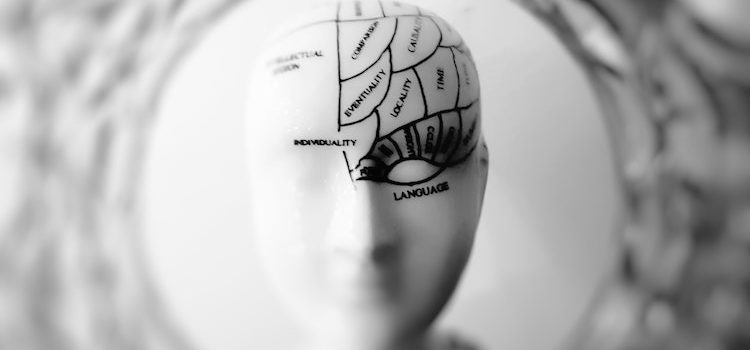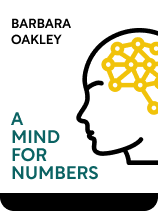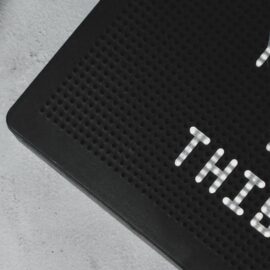

This article is an excerpt from the Shortform book guide to "A Mind for Numbers" by Barbara Oakley. Shortform has the world's best summaries and analyses of books you should be reading.
Like this article? Sign up for a free trial here .
How do you learn? What are the actual brain mechanics of absorbing and recalling information?
Understanding how people learn is helpful if you want to maximize your learning. You can alternate between your two modes of thinking in order to learn and solve problems more effectively. You also can store and recall more information when you have a handle on how memory works.
Read on to better understand how people learn.
Brain Basics: How People Learn
A Mind for Numbers author Barbara Oakley explains our two modes of thinking and how to switch between them, and she discusses the two types of memory. These basics are key to understanding how people learn.
The Two Modes of Thinking
A key theme of A Mind for Numbers is that alternating between modes of thinking can help you learn new things and problem-solve effectively. Oakley explains that your brain naturally alternates between two modes of thinking: focused and diffuse.
According to Oakley, focused-mode thinking occurs when your attention is focused on something, and it allows you to process detailed information. However, she notes that it’s susceptible to the “Einstellung effect,” which occurs when you are unable to solve a problem because the solution is outside the scope of where you are looking for it.
Oakley asserts that diffuse-mode thinking occurs when you relax your focus or let your mind wander. She explains that it continues to subconsciously process information from previous focused-mode thinking, but in a different way: It can circumvent the Einstellung effect by allowing you to mentally step away from detailed problems and see the big picture, or generate creative solutions by making connections between diverse concepts.
Thus, Oakley explains that solving any difficult problem requires an exchange of information between your brain’s focused-mode and diffuse-mode functions. She recommends that you start by deliberately focusing on the problem and then deliberately divert your attention, allowing your brain to switch to diffuse mode. Repeat as needed, alternating between modes until you solve the problem.
| Comparing Perspectives on the Two Modes of Thinking Other writers have used a variety of terms for what Oakley calls “focused-mode thinking” and “diffuse-mode thinking.” Edward de Bono coined the terms “Lateral Thinking” and “Vertical Thinking” for what Oakley calls diffuse mode and focused mode, respectively. He emphasizes that lateral thinking (diffuse mode) generates new ideas or solutions, while vertical thinking (focused mode) down-selects between possibilities. Thus, in de Bono’s view, you should switch to diffuse mode to generate new ideas, and switch to focused mode to select and implement a solution. Malcolm Gladwell contrasted “conscious thinking” with “unconscious thinking.” These modes of thinking can be loosely mapped to Oakley’s focused and diffuse mode thinking, respectively. Gladwell presents conscious thinking as a tool for rational decision making and unconscious thinking as a tool for intuitive decision making. He emphasizes that unconscious thinking operates quickly and that trained intuition can be highly accurate. Thus, he advocates using unconscious thinking to solve certain types of problems directly, although he doesn’t directly address the kind of academic problems that Oakley focuses on. Daniel Kahneman wrote about “System 1” and “System 2” thinking, defining them similarly to Gladwell’s “unconscious” and “conscious” thinking modes, respectively. However, he highlighted the many types of bias that can cause intuition to be wrong to emphasize the importance of System 2 to catch System 1’s errors. As such, he seemed to assume you operate in “System 1” by default, and emphasized the need to invoke “System 2” to analyze the output of “System 1” rationally whenever the consequences of an error are significant. This theme resonates with Oakley’s observation that once you identify a possible solution with diffuse mode, you still have to switch back to focused mode to work out the details and make sure the solution actually works. |
How to Switch Between Modes of Thinking
Oakley lists a number of ways you can give your diffuse mode time to operate on problems you are trying to solve:
- Go for a walk or do something athletic.
(Shortform note: This method can be doubly effective, as health psychologist Kelly McGonigal reports that during physical exercise, your muscles secrete chemicals called myokines that stimulate your brain, increasing cognitive performance and alleviating depression.)
- Take care of routine tasks, such as housework or laundry.
(Shortform note: This helps make efficient use of your time while studying, but as an added benefit, a recent study concluded housework is a feasible means for workers with sedentary jobs and limited time to get the health benefits of physical activity.)
- Get some rest. Oakley asserts that your brain cannot function normally without enough sleep.
(Shortform note: Other authors echo this assertion. Matthew Walker reports that sleep improves long-term memory of important facts while eliminating trivial information, and warns that lack of sleep impairs your ability to focus.)
The Two Types of Memory
To learn anything, you have to store it in your memory. Oakley explains that your brain has two types of memory:
- Working memory is your brain’s workspace: It holds the information that your mind is actively processing. Your working memory has limited capacity. Oakley asserts that, on average, it can only hold about four units or “chunks” of information at a time, although this varies from person to person.
(Shortform note: Not all sources agree as to exactly how many “chunks” of information an average person’s working memory can hold. The number four comes from Cowan’s research, which was published in 2001, and largely supplanted an estimate of seven based on Miller’s work in 1956. In 2003, Gobet and Clarkson published a study revising the estimate to between two and three. In any case, your working memory can only hold a few units of information.)
- Long-term memory is your brain’s library. It stores information for future reference. According to Oakley, it can store billions of pieces of information, although information that you don’t access repeatedly may get buried under other information and become difficult to retrieve.
| Diffuse Mode Memory Oakley doesn’t fully discuss how long-term memory might relate to the two modes of thinking. Focused mode can retrieve information from long-term memory and load it into working memory where it makes use of it. Does diffuse mode operate directly on data in your long-term memory? Or does diffuse mode have its own unconscious version of working memory that absorbs information from your focused-mode working memory so diffuse mode can operate on it later? Given Oakley’s assertion that diffuse mode eventually runs out of information to process, the second explanation seems to fit better. Furthermore, Gilchrist and Cowan have identified that there are both conscious and unconscious aspects of working memory. |
Chunking: Your Brain’s File Management System
According to Oakley, as you take in information, your brain tries to assemble it such that it makes sense. This process of assembling the information into coherent concepts is called “chunking,” and the concepts it assembles are called “chunks.”
Oakley explains that, as you study, your working memory quickly fills up with information. But once your brain processes this information into a coherent chunk, it takes up only one slot in your working memory instead of all four available slots. She asserts that the more deeply chunked something is in your mind, the more intuitive it becomes.
As an example of the chunking process, think about learning to drive a stick-shift. Many small tasks go into shifting gears: You have to move the shifter to the right position, let out the clutch while keeping the engine RPMs in the right range, and so on. However, once your brain has condensed all this information into a single chunk, you can shift gears intuitively, without thinking individually about all the little tasks that go into it.
(Shortform note: Oakley describes chunking as a mental process that occurs naturally as part of the learning process. However, others have explored applications of artificial chunking. For example, in his book, Moonwalking with Einstein, Joshua Foer describes chunking as a mnemonic device: You can remember longer strings of numbers by breaking them up into groups of digits. This could be called “arbitrary chunking,” since you arbitrarily impose the grouping and artificially create a unifying meaning for each chunk of numbers.)

———End of Preview———
Like what you just read? Read the rest of the world's best book summary and analysis of Barbara Oakley's "A Mind for Numbers" at Shortform .
Here's what you'll find in our full A Mind for Numbers summary :
- How to make math and science intuitive
- Strategies for remembering complex concepts more easily
- How to build good study habits and avoid procrastination






